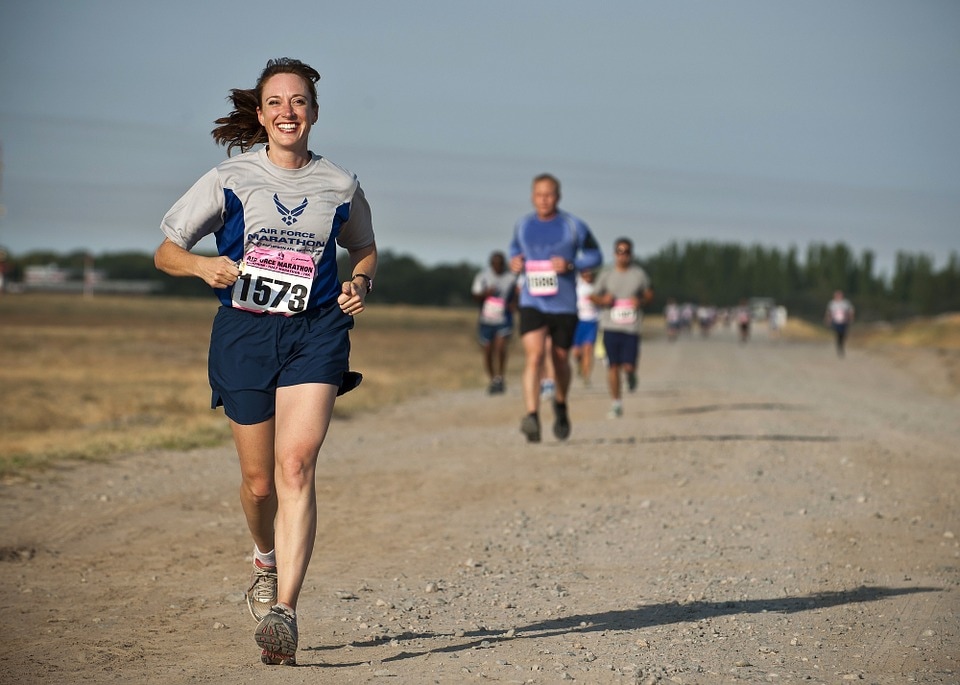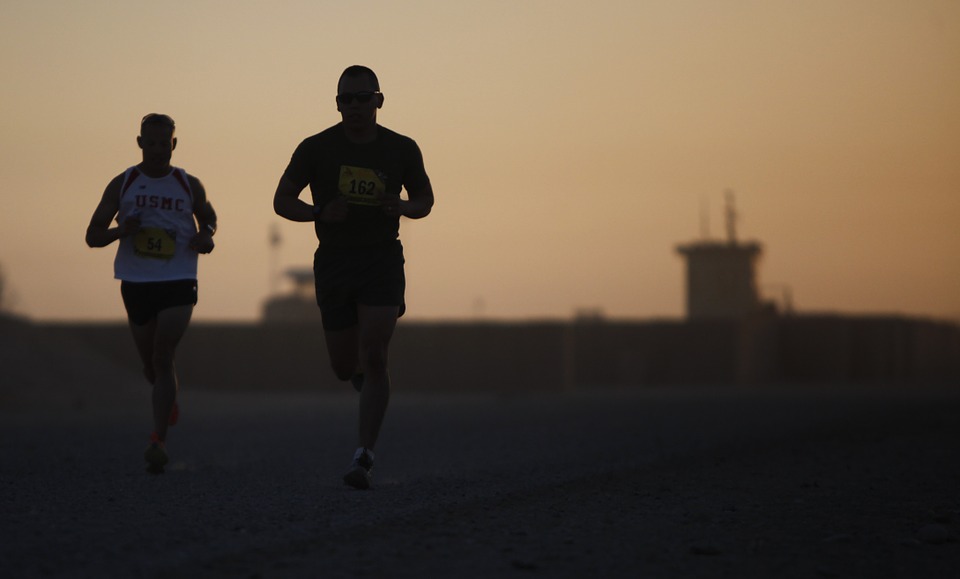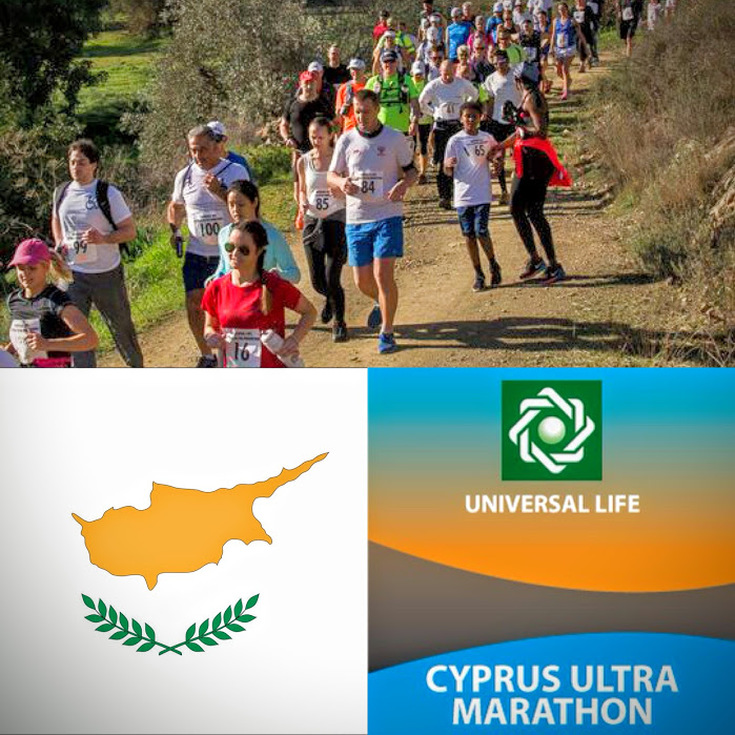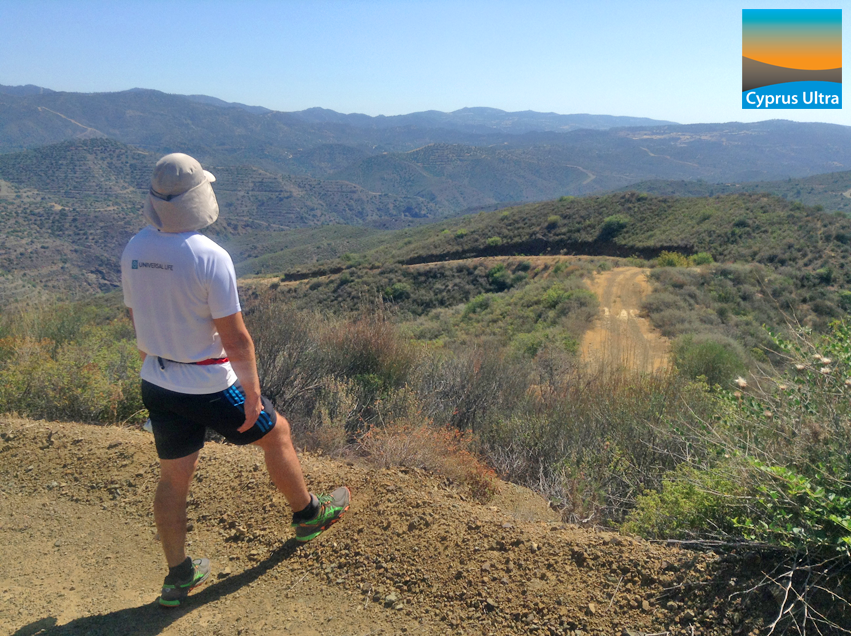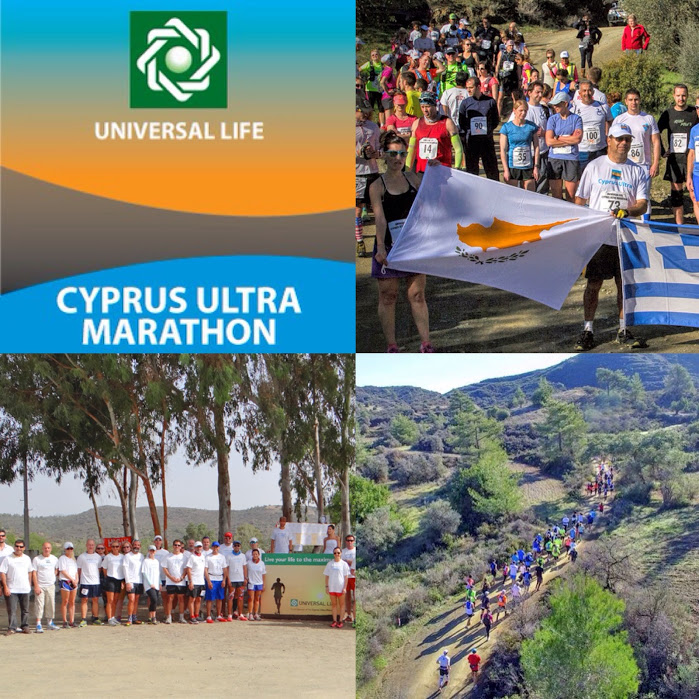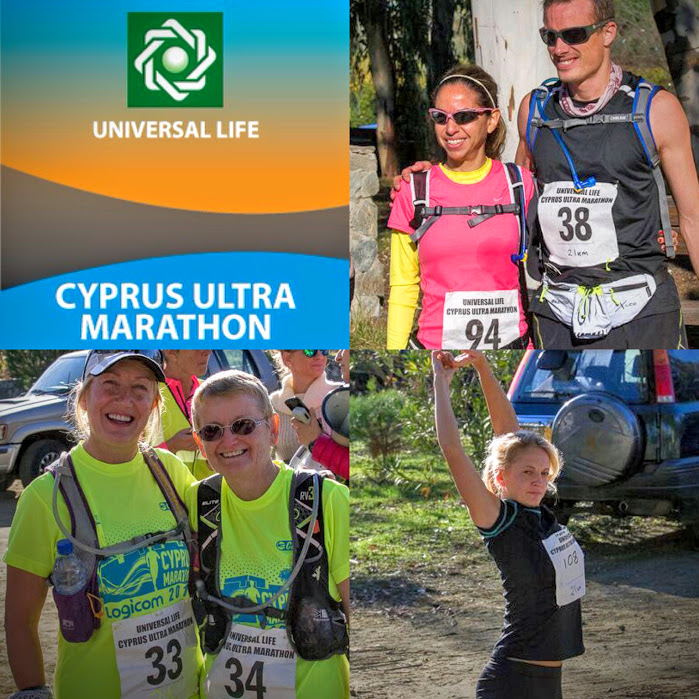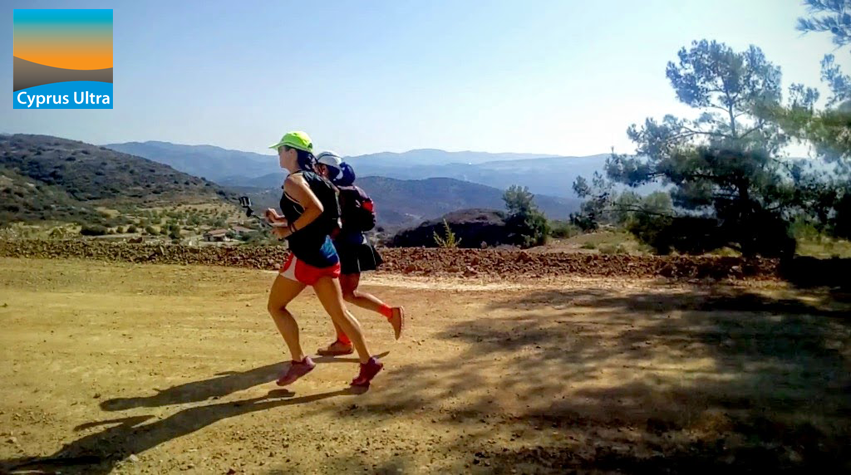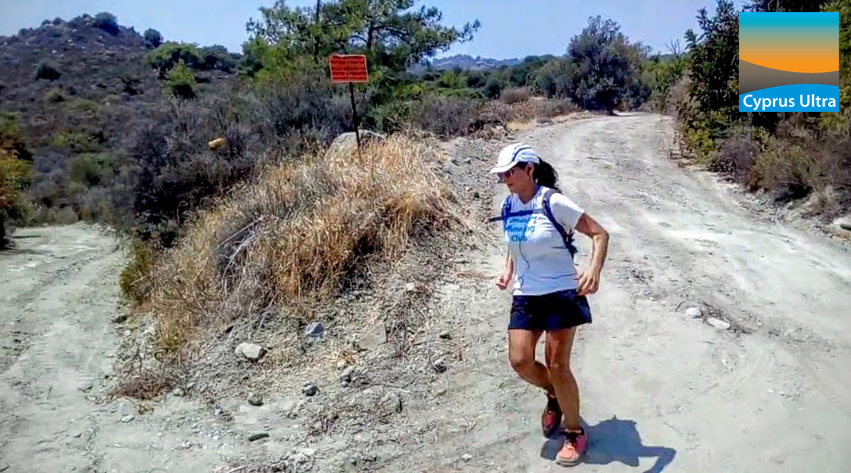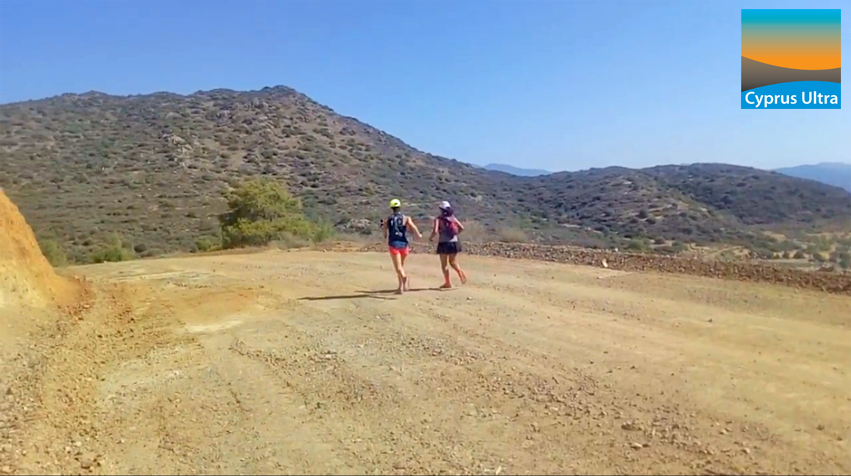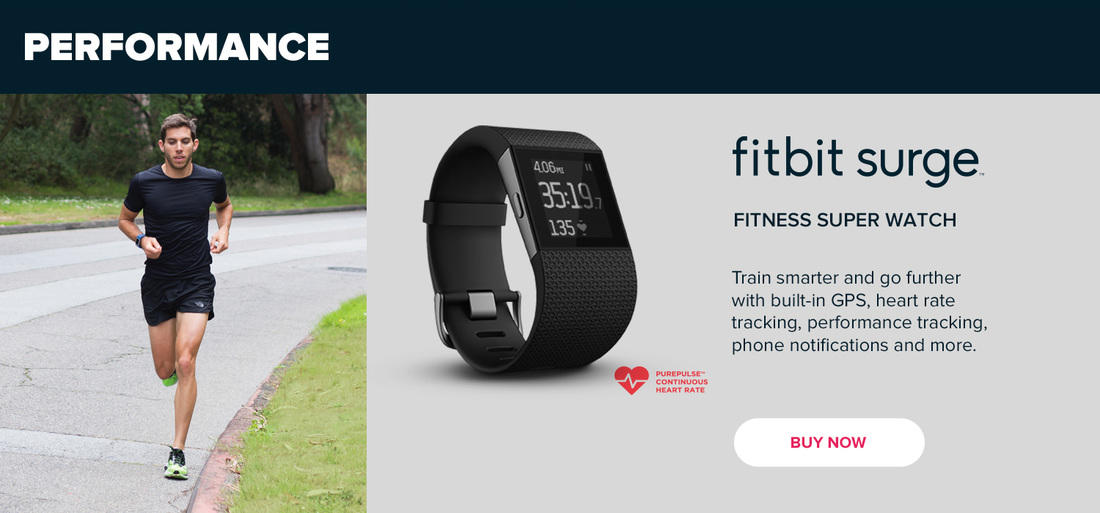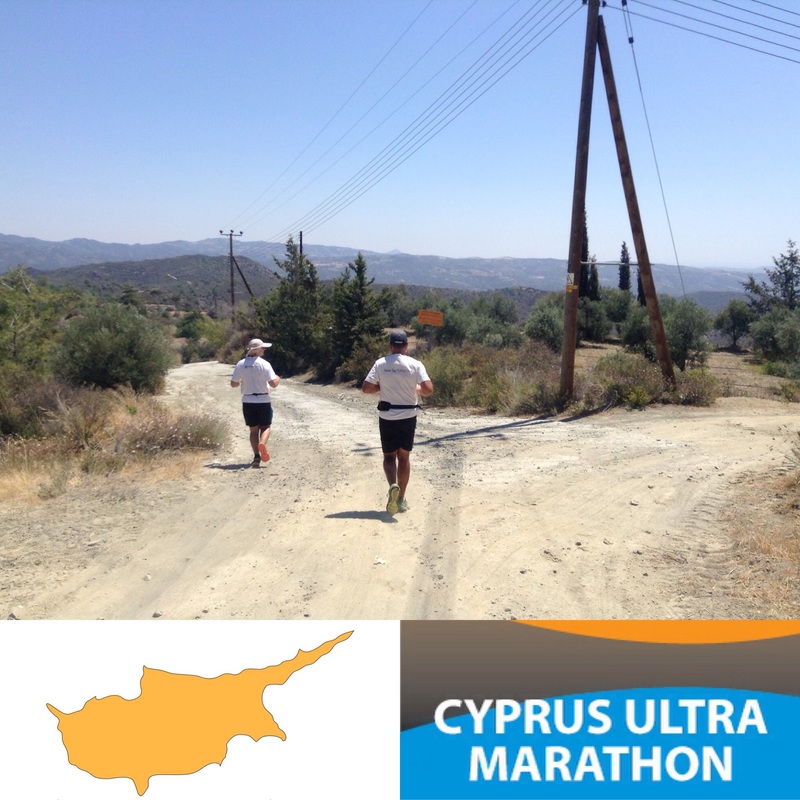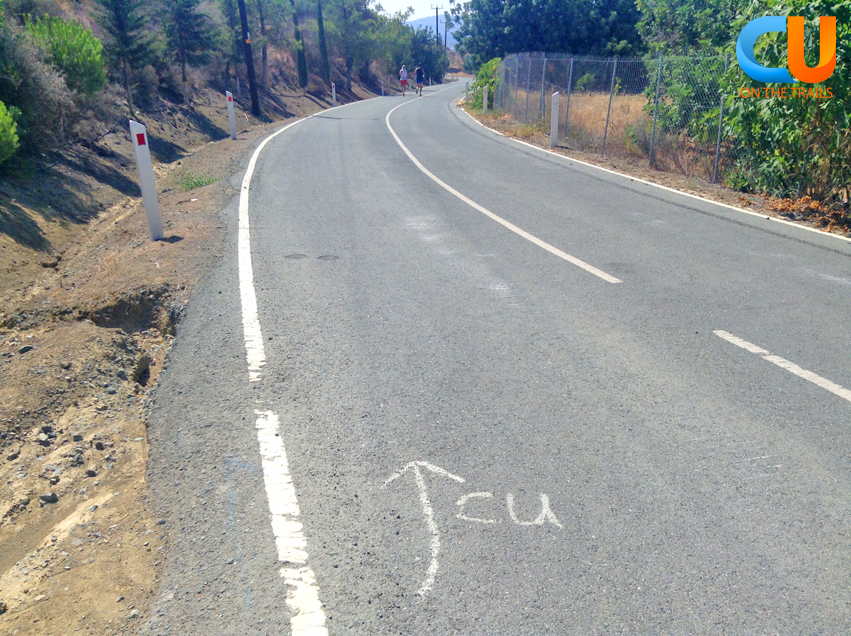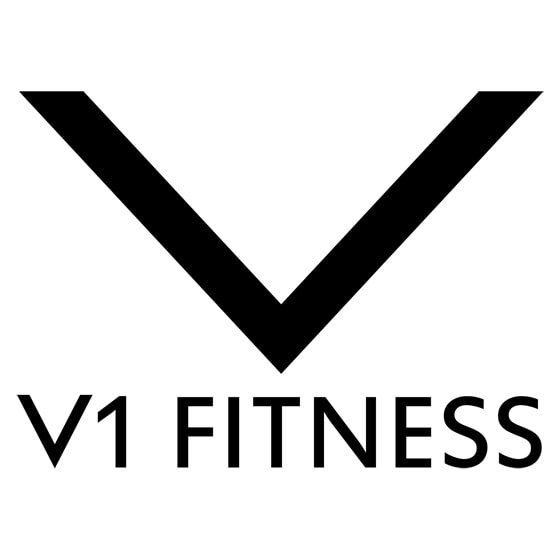|
Marathon Motivation Running a marathon is as much about mental strength as it is to do with how physically fit you are. Undertaking a marathon is a commitment that includes months of preparation to get your body and mind in the right shape. In this article we will look at the best ways to motivate yourself for a marathon. Find a reason that suits you There are many reasons why people don’t think that they can complete a marathon or ultra marathon. In order to show a flip-side to the numerous negative thoughts that run through a person’s mind, Run Addicts created a list of 101 reasons to run a marathon. Much of the list suggests using the marathon as away to discover something new about yourself. The list even included interesting motivation facts such as number 13 which is, “unlike 99.9% of sports, marathon running improves with age in accordance with the increase in base mileage. Wouldn’t you feel great if you run better at 50 than you used to at 30?!” Look at the bigger picture Doubts are normal especially when you are undertaking a challenge that you have never tried before or are attempting to push yourself further. When you start it will all seem too much. Too much time, too much effort, and too much stress. The important thing to remember is that looking ahead, everything always seems tougher and harder and yet when we look back we wonder where the time went. You have to realize that when you finish the marathon you will look back and wonder why you ever doubted you could do it. Traveller and avid runner, Challenger Sophie states that her favourite quote is “one day I will not be able to do this. Today is not that day.” Run for a cause Many people don’t just run marathons for themselves, instead they run them in order to raise money for a charity or good cause. This is a great way to motivate yourself as it adds an extra pressure not to fail or give up. In 2015 actor Jonny Lee Miller, star of the CBS Sherlock Holmes show Elementary, ran a 50-mile ultra marathon to increase awareness of the rare disease Sanfilippo Syndrome that affects children. The actor told CBS News that anybody can complete a marathon if they are willing to get up at 5am, even when it is dark and snowy, and do the training. Sherlock Holmes has become a pop culture icon through shows such as Elementary, Sherlock on the BBC and the two Robert Downey Jr. films. Away from the silver screen, the character has a huge fan base that stretches to entertainment platforms through online gaming site Slingo. This huge digital market reach has helped Miller get as much public awareness as possible for Sanfilippo Syndrome. Stay positive An important point to remember is that you are going to lose motivation. This is normal, even the most hardened and experienced athlete goes through moments of doubt. Marathon Rookie believes that you have to be ready to catch those negative thoughts and turn them into positive thoughts. If you let the negative thoughts sit for too long they will start to increase and hesitation will creep in. Hopefully this has inspired you to keep trying, to keep pushing yourself and to complete that marathon. For runners from all over the world, the Cyprus UltraMarathon is one of the biggest challenges they could ever dream up. Featuring vertiginous mountain trails, hot weather and a varied terrain, it is a race that many train for years for, in an attempt to prove that they can achieve what they thought was unachievable. If you are a serious marathon runner and the Cyprus Ultra Marathon has always been the one race you hope to achieve in your lifetime, these are just a few reasons that may motivate you to train for what is often touted as ‘the toughest race in the world.”
In this sense, the Cyprus Ultra Marathon debunks the myth that all marathon runners are self-punishers who delight in suffering. Actually, the opposite is true – ultramarathon running is ultimately about building a healthy relationship to exercise as a whole, discovering your limits and extending them when possible, without damaging your health. You need to find the race that best fits your physical condition, first and foremost. This may mean completing half-marathons, for instance, before attempting a big race like the Marathon. If you are a beginner to running, you can even start out with brisk walking, working your way up to longer races and eventually, short (and then longer) marathons.
Article by Helen Rayner [email protected] Further Reading: http://mensrunninguk.co.uk/home-page-feature/mimi-andersons-ultra-running-tips/ http://www.rehabs.com/pro-talk-articles/what-constitutes-a-healthy-relationship-with-exercise/ https://www.runsociety.com/training/memo-to-newbies-half-marathons-offer-so-many-advantages-why-run-a-full-one/ http://well.blogs.nytimes.com/2016/09/09/how-does-race-walking-compare-to-running/?_r=0 http://www.varsity.co.uk/sport/10664 http://www.health.harvard.edu/blog/running-health-even-little-bit-good-little-probably-better-201407307310 https://med.stanford.edu/news/all-news/2008/08/running-slows-the-aging-clock-stanford-researchers-find.html
Inner Demons, By Andreas Michaelides.
As human beings, we tend to be lazy and sometimes that’s a good thing. If you don’t ask much from yourself or your surroundings being lazy, it’s the perfect situation you can ask for and achieve. If you are happy with your beer belly and the fact that the only exercise you do is flipping the channels using the TV remote then lazy is your ideal state. Laziness is the default situation and state of our world as strange as it sounds. Most of the time the most economical way is the lazy way. Energy saving is important for us because it allows us to live longer and complete tasks with less effort. When you finish with all of your house chores, family commitments and daily work the last thing on your mind is to wear your running gear and go out for a training session. My opinion is this, and this is just my opinion. It's circumstances like these that separate losers from winners. In situations like these, small little inner demons in your head are whispering to you words like “ you don’t have to train, it was a long tiring day, you deserve to take a hot shower, make some tasty popcorn and have a cold beer while watching a movie on your comfortable couch.” “It’s ok you are tired, you can run tomorrow, rest today and you be ok, you don’t have to go run.“ Enticing words like these are on your head, and you need to make a decision, you need to decide if you are going to give in into the sweet talk of the inner demons or do the RIGHT thing and go out and train even if you are dead tired from life’s routine procedures. That’s how many people stop running, they allow and let the lazy little demons convince them that running doesn’t matters anymore. They convince them that they can skip training today and do it tomorrow then tomorrow comes, and they repeat the same fake sweet words and after a while, you realize that you haven’t run for a month!!! What you need to remember is that running is good for your health which should be your only concern and nothing else. When you have your health, you can be more productive at work; you can be more useful for your family, and you can finish your house chores faster. The benefits of adopting running as a lifestyle outweigh temporal lazy little pleasure like watching TV, or sleeping for hours or wasting your time with social media on the computer, tablet or mobile phone. That’s why it's important to know why you run which is your health. Of course, you may have secondary goals, like finishing a marathon under 3 hours and 30 minutes so you can qualify for Boston for example or finish your first 5km race, the goals are endless, and they are as many as many people are living on this planet. How to beat the little demon, it’s easy, do not think too much ahead, do not think that oh I have to do that after the training and that and that, and I don’t have time and so on. Focus on the moment, say to yourself I need to train now and do not worry about what you will have to do after, when after comes then deal with it. If you have programmed to do 10 miles and you see you don’t have time to do it, do 5 miles do 6 miles and supplement the rest in other training sessions, running has an accumulated effect. Running taught me not to stress out about what will happen but I learned to manage it by focusing on the current task, I am focused to do the best job at the moment and not to think too much far ahead. This way I noticed that I am calmer, and I do catch myself finding solutions to my everyday problems easier and guess when I find most of my solutions? if you said while running you are right. Living the moment, learning the significance of the temporary is what will help us keep running as a lifestyle. I hope I helped. Have a healthy and happy day. My warmest Regards Andreas Michaelides Thirsty4health.com Autumn update for the May 20th 2017 Universal Life Cyprus Ultra Marathon. - Five race distances to choose from. 10 km, 21 km, 50 km, 100 km and the world's toughest 217 km trail ultra marathon. - New gold sponsor for the May 20th 2017 race means lots of exciting goodies for the runners, more news very soon. MyMall Limassol is the biggest shopping mall in Cyprus with everything a runner needs, visit www.mymall.com.cy - New medals for 2017, a beautiful piece of bling worthy of a trail ultra marathon that represents beautiful Cyprus. - Course refinements include a new 24 hour aid station as you begin the upper loop (there are now 4 x 24 hour aid stations over the 21 km course). As this will be a hot weather race, we'll be focusing on delicious fresh fruits, cold water and ice for our weekend runners menu. - New start/finish line and basecamp all in one place. Lots of fun activities and things to do at basecamp. Food stalls, local produce market stalls and a Saturday evening basecamp party with professional Greek dancing entertainment. You really need to get to Cyprus Ultra! May 20th 2017. *NEXT PRICE INCREASE IS SEPTEMBER 10TH - WHY WAIT ONLY TO PAY MORE? SIGN UP TODAY WITH PAYPAL. 
Two exercises for Increasing your lung capacity.
As I mentioned in my last article, I am very focusing now on building my upper body because I realised that without a strong core you don’t go far with running. You literally don’t go far. So now four times a week I weight lift, and I am in my learning phase now and also experimental status checking out to see what works for me and finding out ways to achieve the best optimal result in the least time. It's It’s not like I don’t get enough exercise as weight lifting is concern building a house is the optimum weightlifting event. (Carrying and building bricks, making concrete and using a wheelbarrow to move it, pulling buckets of concrete up, installing scaffolds, etc.) I try to incorporate exercises that will help me straight my shoulders because I do have rounded shoulders and that’s because of the nature of my work. I am a computer engineer, and I do use the computer a lot so me learning for hours in front of it is a major contributing cause. Another reason is the muscles of my upper back are weak having. As a result, to be pulled forward by my stronger chest muscles; that’s why I try to balance the chest and back exercises. Now someone would ask what does having rounded shoulders have to do with running? Well, I had the same opinion, I have rounded shoulders I can still run just fine right? Well, it turns out after searching a bit more that is not okay, it’s very limiting. The reason is that rounded shoulders can result in reduced lung capacity, we cannot take in more air than our lungs are able. The difference in lung function is not small its 15% if you have rounded shoulders you are using 85% of your lung capacity providing you don’t have any other imbalances or issues. So you can see why its imperative to bring my shoulders in a straight line. To do that I use four exercises which Brendan Brazier suggests in his book Thrive Fitness which are 1. Bend Over Stretch and you hold it for 30 seconds 2. Shoulder, Chest, and hip flexor stretch (30 seconds each side) 3. Shoulder blade pinch (25 repetitions 20 seconds rest between sets) 4. Seated lateral raise (15 repetitions 20 seconds rest between sets) Along with other exercises this four I practice them in the morning before I go to work. Since I started doing them I can feel myself being taller. Now a second exercise that will help you with your increase of your lung capacity is Dumbbell fly. By doing dumbbell flys you are strengthening your chest muscles (pectoral) this exercise contributes to expanding the muscles between your ribs allowing for better respiration. The more expanded chest muscles you have the easier it is to inhale oxygen! If you notice all the elite marathoners they might seem to be weak in the upper body but if you note closely for their size they have pretty strong pectoral muscles which allow them to host and accommodate their enlarged lungs that they acquired by years of professional training. So now except dumbbell flys, I do use other chest exercises because I am not as active in that area as I should. So here two activities that will make you breath better, breath more and breath easier. 1. Seated lateral raise (15 repetitions 20 seconds rest between sets) 2. Dumbbell Fly I hope I helped. Have a healthy and happy day. My warmest Regards Andreas Michaelides Author of Thirsty For Health. 
Today I want to talk about motivation. I want to analyse a little bit what makes people stick to a training program or any other kind of program for that matter it doesn’t have to be about sports or running in particular.
When I started running six years ago, my motivation was to lose weight and acquire the physique I had back in high school. That’s was my plan, run, lose the weight and then stop running. I saw running as a way of accomplishing something; my motivation was vanity which would be achieved through the loss of weight that was my motivation, running was just a tool. So that’s motivation number one, vanity, looking good nothing to do with health or running. You can witness this in my running diary which also helps to keep you motivated in times of doubt or when routine or boredom kicks in. The first six months I was me running round and round on my old high school track like a trained hamster, the only thing I care about was losing weight. Of course after six months when I lost the kilos, and I could quickly stop running the competition bug bit me. Not so much about competing with others but more with myself, I wanted to see if I could go further and also faster, so my motivation changed from looking good to achieving better athletic records, so my motivation shifted from vanity to running now! So for the next three years I would train and run having as only motivation me doing better running times and covering longer distances. At some point I achieved all the miles and running goals I set in my head. You can also observe this in my diary where in the years from 2011 until 2013 I run more than 30 races I think averaging one race per month approximately; I had the race bug, and I loved it don’t get me wrong I love participating in races. In the course of those three years my motivations changed a bit also my priorities changed too, I started building my house and running was not my number one priority anymore and it was something that I didn’t like at all, but I had to do it. Me not be able to train for a race was something that did not sit well with me, I felt like something chopped my legs off. I continue to run just to keep in shape, in the mean time I started reading about nutrition I adopted a plant-based diet and I managed to keep my weight in my normal BMI range so the motivation for me losing weight was vanished because it was replaced by healthy eating nutrition choices, my motivation for achieving better times or going longer also were satisfied so I need to confess they were times I struggled to find meaning why should I run anymore? Which I know the answer to that but sometimes emotionally it makes you have doubts. That’s why a diary is a good tactic it will remind you the reasons you started running give you hope and makes you feel better both psychologically and emotionally. Also, it will tell you things and info you might forget. Taking some time away from running or not training as much as you used too because you have other priorities in your life doesn’t; mean you gave up on running, and you should not feel guilty about it. Stressing yourself that you can’t train as fast or as long as you used too because you have other activities in your life. Like raising a family or in my case building a house, or changing career paths or anything else must not make you feel bad for not devoting the time that in your head running deserves. Actually it will call you back and you will feel it. The calling of starting running again will make its mark into your psyche. You will find a way to incorporate it back into your life, you will make smarter career choices you will be more programmed with your family you will find that time to get back to running and devote the time and mileage you think it deserves. You can wake up earlier in the morning and run, you can run nights, you can run between breaks of chores, you will find a way, there is always a way if there is a will that’s what my mother used to say to me since I can remember , she will always tell me since I was old enough to understand, there is no I can’t there is always I won’t . So now you can say I am in search of a new aspects of motivations to incorporate running more into my life again like it used to be. Registering for a race doesn’t cut it anymore for me, I need that extra kind of mind trigger in my head that will make me get up bed every day and thinking and counting the minutes until time comes for my training like I felt 6 years when I couldn’t wait to get off work go home get into my running gear and head for the track and start running like a trained hamster again! I do know that I want to run a few races with particular distance and specific terrain again, but I want to run them better prepared so now I have that as motivation also I am very motivated to build a stronger upper body which will increase my running performance immensely, so I am very motivated about that too. The reason I discovered my new motives is because I took a pause from running, gave me a chance to see it from a new angle and a new perspective. Made me reevaluate my running goals. That’s why I think it’s beneficial to take a few steps back sometimes. It helps you jump ahead considerable “distance” in the future with your training plans, nutrition, goals you want to achieve, what makes you sad or happy, what you consider a waste of time or constructive time, all those things that swim in the back of our heads that make us wonder why we want certain things and why we like some and dislike other. I hope I helped, just wanted to get out some thoughts that they were bugging me lately I hope I didn’t make you feel more puzzled than before or if you are feeling more puzzled than before then you are in luck solving puzzles like running makes you smarter. Have a healthy and happy day My warmest Regards Andreas Michaelides Thirsty4health.com 
When I started reading about how to properly train in running about five years ago, I realised that except the beauty of running itself there is a LOT of information out there about how to train.
The beauty about this information is that most of it are results from debates between runners, physiologists and running training coaches. One of those many debates is how to train to acquire a threshold that will enable you to become better at your running. Threshold training otherwise known as Lactate Threshold, Anaerobic Threshold, Lactate turn point or lactate curve is mostly associated with tempo training. Because our muscles to produce energy contract and especially in high intensity running, lactate is rising which interfere with how fast or how far you can go with a particular speed. In more plain words is the effort, hard one, you can keep for about 5 to 6 miles (8 to 10km) before reaching exhaustion, and it's very close to your 10k pace. Now Lactate is not lactic acid, do not confuse the two, the muscles use lactate during stretching exercises. The muscles create lactate and then is turned into glucose by the liver. The glucose then is utilised by the muscles to produce ATP which fuels the muscles. In retrospect, lactate does not inhibit the muscles from working it helps them to slow down the glucose concentration resulting in better performance. As I said, tempo runs are associated with lactate threshold, and there is a good reason for that. You will encounter other names of tempo runs like Lactate Threshold runs, or cruise intervals or steady state runs, all of these are types of threshold workouts with various durations and rhythms. A threshold run is one that if you take blood from the runner, it should have 4mmol of lactate in its veins. Tempo runs require more recovery times, and you should have a tempo run scheduled at least once a week, and they should consider hard runs. I always hate tempo runs because they do ask of you discipline and performance, but they do bring you into a running shape that you do not want to be out on race day. In tempo runs, you train your body to work on anaerobic state, and it’s a state where the breakdown of glucose is not as efficient as aerobic metabolism. One single molecule of glucose when breaks down using aerobic metabolism will give. As a result, 20 times as much energy as that same molecule was broke down using anaerobic metabolism. Every race that lasts more than 2 minutes is predominantly aerobic for runner of all ability levels. Tempo runs have an immediate goal they fulfil. With tempo run, you train your body to resist fatigue caused by sustained anaerobic energy production, which produces chemicals changes in your muscles and a level of pure pain that tends to limit performance. Now threshold training should be challenging but not exhausting. You should finish a tempo run and feel that you can go for a bit more. As I mentioned in other articles, it's not a good idea to make too many changes at the same time. Here it applies the same, You either increase distance or speed. Here is an example, for distance, you can do 2 X 10 minutes Cyprus Half-marathon pace and then you can increase to 2 X 15 minutes at the same speed. For speed here is an example you can do 2 X 15 Half-marathon pace and increase speed by doing 2 X 15 10K pace. Always make changes gradually and one at a time, this way you give time for your aerobic system to adapt. Now for the last few years, I am using a technique called progression running and is a technique I read in Brad Hudson and Mat Fitzgerald’s book “Run Faster from 5k to the Marathon.” Here is an example of how it works. 2 miles easy (good warm up always) 10 min at my marathon pace goal 1 min easy (cooling down period) 10 min at my half-marathon pace goal 1 min easy (cooling down period) 10 min at my 10k pace goal 2 miles easy (cooling down period) After you finish this training you should not be tired; you should feel that you can do a bit more. I hope I helped. Have a healthy and happy day. My warmest Regards Andreas Michaelides Thirsty4health.com 
Introductory training
When I started training for my first race six years ago I didn’t know much about how to train properly; the truth is I still don’t know how to prepare properly. I am still learning and experiencing with various principles and different approaches and techniques, and I am always trying to keep what works for me. One of the first things I learned about running training was the so-called Base or Introductory training which is the first training a runner does in relaxed aerobic state. That’s when I found out about Arthur Lydiard, and I bought his book Running the Lydiard way. He advocated that the first phase of your training should be as he calls it marathon training and what he meant was aerobic exercise at least 160km per week on a near –best aerobic effort, and you should run every day! I know it's a hard as a program, but it does build stamina. I still use this technique when I am training for a marathon and also a 50k. I will do that for at least four to six weeks and after that, I will work on my other phases like Threshold training, VO2max training, etc. For some running, every day is too hard doesn’t make any sense or don’t have the time and sometimes myself don’t have a chance to run every day but I do apply another solution. I use a three-week training cycle where I run 4 to 6 times a week, and I increase the volume of my training by 10% from week 1 to week 2 and on week 3 I return to the training volume of week 1. In order not to get injured, I apply the rule of 33% for my long run meaning my weekly long run should not be more than 33% of the week’s total mileage. Two to three strength training sessions where I make sure my form and my movement are correct. The introductory or base training is your foundations of what you will do in the future as a runner, so my advice is to experiment slowly and find the sweet spot for you. As you get more experienced, you will notice that the base training period is getting smaller. If you are a beginner to ultra running, you should run until you develop good fitness level, and you acquire strong skeleton and muscle system. You should keep your heart rate at 75% of your maximum beats to stay in aerobic state and train your body to burn more fat than glucose as I mentioned in earlier articles. I hope I helped. Have a healthy and happy day My warmest Regards Andreas Michaelides Thirsty4health.com
Why do we move?
Have you ever wondered why we have the ability to run? I mean why do we move? What is the mechanism behind it? Well, it turns out that to make the slightest movement hundreds of chemical reactions and muscle contractions are done. Muscles are the ones that are attached and connected to our bones with tendons and ligaments and other supportive tissues and are the ones that move our bones to the desirable direction. When you are using your vacuum cleaner to dust off your carpets, it uses electricity which then transforms into energy to function. When you are driving your car, and you see that the gas indicator is near empty you make sure you fill your tank with gas because the car needs gas to transform it into any kind of energy it will need to function properly. Our body is of course much more complicated than a vacuum cleaner or a car, well some of us are, (smile) so that too needs energy so our muscles will be able to contract and apply the movements our brain is asking for them. Our muscles to be able to contract and to be able to make the necessary changes need a form of chemical energy which they produce. Adenosine Triphosphate The chemical energy our muscles need is called Adenosine Triphosphate or otherwise ATP in short. In previous articles here I mention ways that our body is using to propel itself forward or basically doing any other kind of exercise. The two processes I am referring are aerobic and anaerobic. In the aerobic state the muscles are using oxygen to work and in anaerobic they don’t. Our muscles use Carbs, fat and in a little degree protein to manufacture ATP. If you are a runner, and you are going to participate in a marathon or a race more than 26.2 miles then getting carbs and fat during your race is paramount. It doesn’t really matter what kind of carbs, the simplest the better. This is a short-range solution to be able to feed your muscles enough glucose which then will be stored in your muscles and then the muscles will use it to create ATP which is the energy that powers them. Now long term range solution should not only be centered on providing your body with simple carbs but make sure you eat the right kind of carbs. My opinion is unrefined, unprocessed complex carbs like legumes (beans, lentils, etc.), starch (brown rice, potatoes, etc.) and fruits (even they are simple carbs they provide massive amount of minerals, vitamins, and water). The reason you should consume this kind of carbs and not simple, refined carbs like sweets and heavily processed juices and other packaged items is because our body except carbs, fat, and protein to work optimum needs another three basic and fundamental nutritional elements. We need minerals (zinc, iron, etc.) we need Vitamins (B12, C, D, etc.) and lastly but in no way the least necessary water. All the unrefined carbs contain much higher and much better quality of vitamins, minerals and also they contain water than simple carbs. Carb loading So for long-standing health and also long standing improvement of your training you need to have your muscles and liver storage full with glycogen (series of chained glucose molecules to save space in storage) Most of the ATP is made from carbs and fat, protein does not ordinarily being used for the production of ATP. Protein paramount role is to build, repair and maintain our muscle mass and also bone recovery, after all, that pounding our body is subjected from the accumulated mileage of our training. Glycogen Storage There are two places where glucose is stored after every meal we take, in our liver in the form of glycogen which is used primarily to keep the blood glucose level (our blood sugar) in normal values and also to keep our nervous system and brain functioning optimum since both of this entities by glucose. Also, our muscle system is controlled by our nervous system, a nervous system that does not function well will have as a result of a malfunctioning muscle system. Creation of ATP The whole procedure goes like this, we eat complex or simple carbs, the body breaks them into glucose if they are complex or use the glucose immediately if they are simple. The liver and our muscles are stored with glucose which they use to create ATP which will allow them to work. We can store around 1500 to 2000 calories of glycogen in our body which is not a lot if you compare with the thousands of calories we have stored as fat. The general rule is if your exercise is moderate to high intensity your body uses more carbs than fat to create ATP. If your activity is slow and average, then your body uses more fat then carbs to produce ATP. From all that 1500 to 2000 calories stored as glycogen not all of them can be utilised for running because most of the calories are stored in muscles that are not primarily used for running. Example The glycogen stored in the biceps can only be utilised by the biceps, the glutes or the quadriceps cannot use the biceps glycogen only the glycogen they have themselves stored and vice versa of course. That’s why it’s important to train ourselves and reach the best fitness level we can have because the fittest you are the most fat you burn to create ATP, and you become more economically and efficient in saving your stored glycogen. Diet Also if you are consuming in your diet more carbs than fat you be burning more carbs than fat all the time, if you eat more fat than carbs then you be burning more fat than carbs all the time. Of course eating too much fat is not good for your health, and it’s a good tactic to have less than 30% of your calories from fat and also aim to consume unsaturated fat and not saturated fat. Unsaturated fat is primarily found in plants and saturated fats in animal products. Unsaturated fats are proven that promote health and on the other hand, unsaturated fats are the cause of many chronic diseases like heart attacks, strokes, diabetes II to name a few! Duration If your run is long and the duration is more than 1 hour then at some point regardless of your intensity, you will start to create more ATP from fat because the glycogen storage of the liver and skeletal muscles depleted. Also because the carbs you are receiving during the exercise do not cover your energy needs. Weight loss If you want to lose weight while training for a marathon or any longer distance it is not a good idea because the training will open your appetite for more food because you are burning a lot of calories. To lose weight, you need to do calorie restriction which is not a good idea especially for this kind of heavy training. What you can do, though, and it will help you lose weight without risking losing performance because of lack of calories is to eat a lot of fruits, vegetable legumes, and starches. The reason is because they are packed and are rich in minerals, vitamins, and water but also they provide bulk (fibre) which will keep you satiated longer and also with fewer calories than animal products. The food I mentioned is high in carbs and low in fat so these way you be using and burning your stored fat during training thus noticing weight loss. Basically, you be eating more food with fewer calories. Percentages Aim for 60 to 80% of your calorie intake to be from unrefined complex and simple (namely fruits and veggies) carbs, 10 to 25% fat and 10 to 15% protein. I personally am following 85% carbs (complex like legumes and starch and simple like fruits), 9% fat (unsaturated, mostly from seeds like hemp, chia, flax etc) and 6% protein (plant based- I supplement 8 grams of rice protein and 5 grams of chlorella before heavy lifting or long runs). I hope I helped. Have a happy and healthy day. I am off to eat some kidney beans (yummy!) My warmest Regards Andreas Michaelides Thirsty4health.com 
Prevention is the best practice, good warm up and good cooling down period, increase the intensity of the training gradually and always have as guide your body as I mentioned in my previous article “When to change your training’s Status Quo.”
I am not an expert on running, but I learned a lot through a series of minor injuries and one big injury. The way I used to run was not excellent for my body, my form was all bad, I promise I will write an article in the future for the proper form of running. I was abusing my body to achieve other goals, which was to lose weight, the shift from losing weight and rethinking my running goals towards making better personal records took its time. It was in that transition period where I had my most injuries, and that’s because I didn’t know how to train properly, everybody can run, training is another elephant in the room. So below I am describing practices that helped me with my injuries, I hope some of them help you, I am sure some of them you already use, and I am certain there are much more elements you can incorporate into your training which will help you deal, prevent and heal your running related injuries. One thing when I first started running back in 2010 was that I did not do a proper warm up I would never stretch, to tell you the truth if I am going to participate in a long run, and this is my little hidden sinful secret, well not secret anymore, I don’t warm up or stretch at all. I know big mistake; I am still relying on my good genes for that! Hey, nobody is perfect. Now when I am doing hill repeats, or track repeats or tempo runs that will only last 1 hour tops, I do some seriously warm-up, sometimes my warm up and stretching exercises are longer than the actual training time itself. The reason I am doing that is that all the training activities I mentioned earlier are high in intensity and hard to do, and usually, injuries occur when you are doing there kind of energy demanding efforts. One of the reasons that I still don’t get injuries while doing my long runs is because the intensity at the begging of the run is slow and not so intense and it gives my body adequate time to warm up “properly” so to speak resulting in me not getting injured. Another thing I do which helps me maintain my injury-free status is that I run on dirt trails and dirt roads, also the high school track where I train still has soil track, not tartan track. These surfaces are softer and do not afflict the same level of intensity on our body as concrete and pavements do. If you are a runner in the city, it might be better for you to invest some time going to a place like a park that has dirt roads or if you live near a wooded area do your training there. It might seem for you now a waste of time but as an injury is a concern is a life saver especially if you're training for a marathon or longer distances. The long runs start to become longer and you will want that extra security blanket that you won't get a serious injury a week just before the marathon race!!! That would suck big time. Invest some time to learn about what kind of foot you have, do you have over-pronation or supination. A good footwear shop always has equipment and experience personnel to guide you on the purchase of your shoes. Also, there is a ton of info about shoes and feet and running, do a little research it won’t kill you it will make you wiser and prevent a series of injuries that are shoes related. It is important not to ignore pain, and sayings like: “no pain no gain” for me is just plain stupid. Pain is one of the early warnings of your body telling you, informing you that something is not right and you should investigate immediately and not run through it and hope will go away. I admit I used to do that in the past, and I end up being home sitting on my butt more time that I was out running especially when in 2012 after running my first 50k without proper training end up getting injured with ITBS (iliotibial Band Syndrome). That Injury kept me away from serious training for a good five months, and it was one of the worst times of my life. All of these happened because I was ignorant and not proper prepared. So with the first sign of the tiniest discomfort not even pain, investigate, check it out and also you can always do something that the running community calls R.I.C.E. no I am not going to argue about which rice is more nutritious than the other, brown or white, brown of course (smile). R.I.C.E. is an acronym of the words Rest Ice Compression Elevation Apply Ice on the injured area 3 to 4 times during the day. Try to ice the area 10 to 15 minutes every time you apply the ice. I usually get a towel and ice cubes; I put the ice cubes into the cloth use the towel where I hurt and just leave it there for about 10 minutes. Also skipping a few training sessions until the pain or the discomfort goes away is a sound tactic and don’t feel you are missing out on training, well you are, but it is better to deal with now when the situation is small and not later when it be out of control. Rest for goodness sake indulge yourself with something else, see it as a break from running and trust me if you are hooked as I am a few days away running make your comeback a fat more pleasurable event. The elevation is not always possible since you need to raise the affected area above heart level so blood will flow back to the heart decreasing thus the swelling. Cheat Sheet. Always warm up and do your stretches before running. Always have a proper cooling down period after running. Increase Intensity of Training gradually. Buy shoes that are suitable for your feet. Do not ignore mild discomforts. Do not for the love of what you consider holy or not run through pain! Apply RICE after any pain. I hope I helped. Have a healthy and happy day. My warmest Regards Andreas Michaelides Thirsty4health.com |
Categories
All
|
YOUR LOGO HERE - SPONSOR THE GREATEST ULTRA RUNNING CHALLENGE IN CYPRUS
|
Cyprus Ultra Marathon, Vasa Kellakiou, Limassol hills. Est. 2011.
Vasa kellakiou/sanida/kalavasos 21km loop created by Michael Rivers. |
First ultra marathon in cyprus to accept BTC
|
World's first vegan ultra marathon
|
